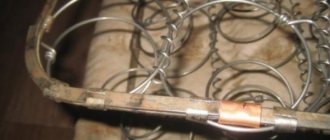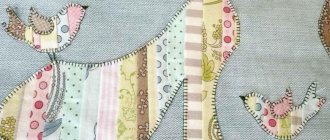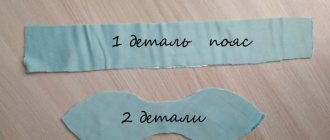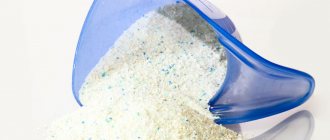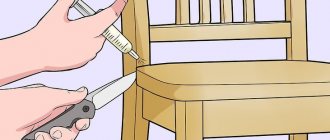Reupholstering a sofa is a forced measure, the need for which is determined by the appearance and various malfunctions of the furniture. Repairs are not difficult if you have some skills in working with tools and fabric.
You can make your work easier if you divide the entire process into stages, each of which has its own characteristics. But first you need to carefully study the theory, and also write down all the important points on paper, because in practice it does not always work out exactly as you would like.
Dismantling and important points
Before we begin purchasing material, we need to assess the scale of the work ahead.
To do this, perform the following sequence of actions:
- We evaluate the appearance - reupholstering does not always mean replacing the upper part. There is no point in changing the fabric surface if the frame inside is broken or the filler has sagged.
- Carefully rip open the sofa seat to understand the condition of its interior. To do this, you need to bend the staples with a sharp object and simply remove the linen covering. A flathead screwdriver does the job well.
- We assess the condition of the filler : whether it has sagged, dried out or deformed in certain places. After this, we determine whether it needs to be replaced.
- We carefully inspect the frame - for the sofa to remain strong, you need to make sure that there are no cracks in the wooden frame. The inspection is carried out after the internal parts of the sofa have been removed.
Expert opinion
Kokovin Dmitry Vasilievich
Furniture restorer
If the sofa has a block-spring seat type, then they should also be carefully inspected for defects. Usually such elements are not damaged and return back to their usual place.
So, at this stage we need to follow three main rules:
- We remove the upholstery as carefully as possible, removing each bracket one by one using a screwdriver. We do not throw away this fabric, since it will be our template that will allow us to correctly make a pattern from the new fabric.
- We carefully remove the inner part from the sofa and also do not throw it away. It will also act as a guide during reassembly. If these are block springs, then they just need to be covered with a new layer of foam rubber.
- If the sofa is large enough, then it is better to photograph all the individual details , so as not to get confused later about where and which element should be located later.
After dismantling is completed, the sequence of actions is as follows:
- Determine the type of fabric needed for the upholstery, as well as the dimensions for each individual piece and the overall size that will be taken into account when purchasing.
- Make calculations regarding the required amount of filler, and also select its type.
- Buy all the necessary materials and prepare the tools.
- Make the constriction, following the step-by-step instructions.
By following these simple rules, you will protect yourself from unexpected expenses, and also make your work more comfortable and faster.
To make the process easier, let's do all the steps step by step.
Wear level
Depending on the intensity of use, the degree of wear of upholstered furniture and, in particular, a sofa, may vary. Typically, this requires various types of repairs. Sofa wear may include:
- The fabric covering is worn, but there are no visible dips in the soft part or protrusions. In this case, they can only get by by replacing the fabric covering, although it is not always possible to get off so easily.
The simplest case is if you need to replace the fabric - There are pressed places available. This is mainly due to the wear and tear of the springy parts of the sofa, so you will also have to deal with the soft part, replacing the padding polyester and other underlying layers. The spring blocks may also need to be repaired and replaced. The spring block can consist of springs, foam rubber or silicone. If the appearance of the upholstery is not damaged, then it is washed and used again, although there is no point in this.
- In the failure of the lower part. If the bottom of the sofa is sewn up with a material such as fiberboard, then it may not withstand heavy loads, as a result of which the spring block simply breaks through the bottom of the frame. It’s better to take everything apart and replace the fiberboard with plywood.
This one needs more than just upholstery replacement... - Damage to frame elements. In wooden structures, as a result of prolonged use under conditions of increased loads, cracks appear, which leads to breakage of such structural elements. In this case, the sofa is completely disassembled and all elements that are cracked or broken will have to be replaced. In fact, we can talk about assembling a new sofa, since the sofa will have to be reupholstered.
In other words, repairing a sofa involves a whole range of repair activities, so we can’t just talk about simply replacing the upholstery. If the sofa is equipped with a spring block, then the work can become significantly more complicated. The fact is that reupholstering such a sofa requires considerable skill, so it is better to immediately throw away this block, replacing it with foam rubber or furniture silicone. The result is a design with many advantages, and the effect of comfort will be felt immediately.
Choosing the right fabric
In order for the sofa to serve faithfully for decades, take care of high-quality upholstery that will protect it from moisture, dust and debris.
The modern textile market offers a lot of fabric upholstery for sofas, but the best of them are the following:
Gozhka
The most practical and inexpensive upholstery option, the service life of which is more than 10 years. Easy to clean, including wet cleaning. Not subject to deformation and various damages. The color does not fade when exposed to ultraviolet light.
Flock
Thick, soft fabric that is perfect for pet owners. Does not absorb moisture or odors, does not sag or deform under weight. It cleans well and has hypoallergenic properties.
Courtesan
The surface of the fabric is impregnated with special solutions that prevent moisture and odors from penetrating inside. It is very easy to clean and retains its color even after long-term use.
Forest
The best material that does not deform during operation. Does not absorb moisture and odors. When stains appear, they can be easily removed with a sponge and soap solution.
Boucle
An excellent option that is suitable for voluminous sofas. The fabric fits well on curves and non-standard shapes. The edge does not crumble and does not require additional processing.
Microfiber
The fabric does not fade, does not crumble and does not fade. Easy to clean with a vacuum cleaner. It belongs to the luxury class, so it is quite expensive.
Chenille
It has a wide range of colors that will fit perfectly into any interior. The fabric is dense, soft and practical.
Scotchgard
Dense but lightweight fabric that is easy to clean and does not accumulate dust on the surface.
When choosing fabric, follow these tips:
- Density and wear resistance - the higher these indicators, the longer the upholstery will last.
- Price is an important indicator, especially if you need to change the upholstery on fairly large furniture. Decide for yourself whether it will be a more expensive but durable material, or whether quality can be sacrificed in favor of preserving the budget.
- What kind of load will be placed on the covering - if there are children and animals in the house, and the sofa will have to be cleaned literally every day, removing stains and other dirt, then it is better to choose impregnated fabrics, which will greatly facilitate the housewife’s work.
Expert opinion
Kokovin Dmitry Vasilievich
Furniture restorer
Do not use leather or leather substitutes for upholstery. This is quite expensive and impractical, and if you spoil the material, you will have to purchase it again, wasting money. Such sofas require special care, and reupholstering them will cost the cost of a new sofa.
Each material is good in its own way and you can choose exactly the option that will be both reliable and affordable.
How to choose an ottoman
You can decide which is better, an ottoman or a bed, only by knowing the parameters of the room and the features of its use. Here are some arguments:
- An ottoman and a sofa are cheaper than a bed with a mattress.
- An ottoman is more compact than a bed, it looks good and is conveniently located in a corner or along the wall.
- Folding models are especially relevant for the living room or children's room, where free space is necessary.
- A large bed and bedding inevitably turn the room into a bedroom, and a sofa and ottoman make it multifunctional.
- The bed is more durable than an ottoman because it can be replaced with a mattress. You will have to get rid of the ottoman when it loses its elasticity and shape.
The Soviet ottoman often had a sleeping place consisting of several pillows and had an unpresentable appearance. Modern models have come a long way from this prototype, and therefore the ottoman is relevant again in 2021.
When choosing a specific ottoman model, pay attention to the following parameters:
- Folding mechanism: in addition to the “ottoman” of the same name, a roll-out couch, a Eurobook and others are used.
- The base material must be reliable, this parameter is especially important for folding models. The highest quality ones are made from solid wood.
- Availability, shape and height of backrests. Choose corner models especially carefully: the location of the backs determines in which corner the ottoman can be placed.
- Mattress type: independent spring blocks are the most expensive and comfortable; nothing will put pressure on the side. The usual spring mechanism adapts less well to the shape of the body, and soft fillers such as thick foam rubber are available, but are short-lived. What is better is up to you to decide.
- The practicality of the upholstery material and the ability to remove covers for washing are especially important for children's rooms.
- The shape, color, materials must correspond to the design of the room.
Before purchasing, be sure to evaluate what the model looks like in real life: pictures in catalogs may not accurately convey color and create illusions regarding size.
We count the footage
To calculate the total footage of the fabric used, you should calculate the length and width of each individual part, and then add these parameters. Keep in mind that when working, an allowance may be required, which is formed by increasing the volume of foam rubber or replacing the blocks with newer ones. Therefore, before purchasing, take 1 m more fabric than is needed, because when creating patterns, you will need to take an additional 3-5 cm of stock on each side.
After the footage has been calculated, you can go to the store and look at the assortment. As for the color scheme, the priority was, is and will be graphite, all shades of gray, burgundy and blue. These are the colors that are considered the most practical and not easily soiled for sofas.
Choosing a filler
If the inside of the sofa is perfectly preserved and does not require replacement, then this step should be skipped, going straight to creating a pattern and reupholstering.
If the sofa has exhausted its resources, then its filler should be replaced, which can be of the following types:
Periotec
Non-woven material that includes natural fibers (coconut, flax, corn) and artificial components that hold their shape well and also provide elasticity and strength. The material is hypoallergenic, and its characteristics are quite capable of competing with a spring block.
Sintepon
A more budget-friendly option in the form of non-woven fabric, which is sold in rolls. By increasing the layers of padding polyester, you can adjust the degree of rigidity of the sofa itself. It is usually used as a layer between upholstery and polyurethane foam, which makes the surface soft.
Polyurethane foam
A highly porous material that holds its shape well, while being soft and comfortable enough to fill the seat and back of the sofa. It is absolutely safe for health, has a long service life, does not accumulate dust and unpleasant odors.
Spring block
Made to order according to your measurements, or selected from those options that are available. Keeps its shape perfectly and does not sag. It needs a felt layer that will protect the foam from the effects of springs.
Struttofiber
It is called “non-woven independent springs”, which perfectly retain pressure, distributing it evenly over the entire surface. It is one of the most practical and durable fillers today.
To calculate the required amount of filler, you need to measure the dimensions of individual parts of the sofa, as well as determine the thickness of the filler itself. If you take thinner options, such as padding polyester or holofiber, then you need to initially determine how many layers there will be.
If you are in doubt about which filling will have the best qualities specifically for your sofa, then try forming a sandwich from struttofiber, polyurethane foam and felt. This combination will be the most advantageous, since the struttofiber holds its shape perfectly, the felt protects it from sagging at a specific point of constant pressure, and the top layer of polyurethane foam provides the necessary rigidity.
"Composition" of sofas
The interior of the sofa (back and seat) is made in several versions:
- springless - furniture foam rubber is used, which has high-density latex foam. The latter will cost several times more;
- spring - the product is equipped with a “classic” block with springs or snake springs, which are used to support the “filling” of latex foam. Separate springs are also used, each of which has an individual textile covering.
The composition of upholstered furniture interiors depends on the model of the product; in “pastel” it can be:
- spring block of the “capon” or “snake” type;
- padding polyester;
- felt, thermal felt;
- horsehair;
- bamboo fiber;
- non-woven material;
- mat;
- cotton wool;
- polypropylene fabric;
- Vulcanized fiber;
- polyurethane foam (even chopped), etc.
It is recommended to replace outdated product fillers with more modern, environmentally friendly and wear-resistant ones.
We prepare materials and tools
To work we will need the following tools:
- Construction stapler with metal staples for fastening upholstery.
- Stationery knife and scissors for cutting filler.
- A sewing machine for stitching individual parts of fabric if the width of the material does not allow you to obtain a solid pattern.
Before performing the main work, you need to prepare the upholstery fabric. To do this, we unfold the purchased section on the floor, and on top we lay out those parts that were dismantled earlier. Using sewing chalk, we trace the patterns, making an indent of 3-4 cm from each edge.
We arrange the patterns so that they fit on a piece of fabric. First we outline the largest parts, and then the smaller ones. We cut out the decor separately from the leftovers. If the fabric has a pattern, then it is better to make the pattern on the front side, making sure that each detail has symmetrical patterns.
Expert opinion
Kokovin Dmitry Vasilievich
Furniture restorer
If you have never reupholstered furniture, then for the first time it is better to avoid fabrics with patterns. It is quite difficult to make it symmetrical, but the material consumption can be 2-3 times higher than when using a plain fabric.
When the patterns are ready, you need to start filling. It is cut according to all parameters, laid and compared with the base of the sofa.
Features and sequence of constriction
If everything you need is prepared, then you can proceed directly to work:
- We remove all structural parts of the sofa : back, seat and side parts, if any. First, we process the frame, which will be visible to the naked eye. Those parts that are hidden under seats or pillows do not need to be covered.
- We tighten the side parts: to do this, place the fabric on the floor, place the side, lightly pull the edge to the back side with your left hand and fasten it with staples to the surface, adjusting the tension force.
- We are working on the seat : we lay the filler, compact it well, and lay out the fabric pattern on top. On the reverse side we attach the first 3-4 staples, after which, carefully stretching the fabric, we upholster it around the entire perimeter. We make sure that the filler does not deform and does not roll into one part of the seat.
- We upholster the back : the sequence of actions is similar, but you need to pay special attention to the tension force. You should place your palm on the surface and press on it. If everything is done correctly, then after the palm is removed, the fabric will return to its original position.
If there are pillows on the sofa, then we upholster them. If the sofa itself consists of blocks, then the upholstery will occupy exclusively the side parts and the base. Cushions for the seat and back will have to be cut according to the specified parameters, then filler must be inserted there. It would be good if such a case had a hidden zipper. The covers can be removed and washed in the washing machine at any time.
The work will take even the most inexperienced craftsman about an hour. If everything is done correctly, the result will exceed expectations.
Have you ever had to reupholster a sofa?
It was a matter of I want to try
The nuances of covering leather furniture
There shouldn’t be any difficulties with questions about how to cover a sofa with fabric yourself. The situation is a little different if you plan to work with leather. In this case, the restoration and reupholstery of the sofa is carried out taking into account a number of rules:
- When working with leather, you should absolutely not use pins, as they can leave holes in the surface of the material. For fastening workpiece elements, adhesive tape is preferable.
- To prevent rough seams from forming when stitching the cover, it is recommended to press them through gauze fabric.
- In order for a sewn leather product to last a long time, it is not recommended to drive staples into the material itself; it is best to attach them to a felt pad or other dense surface.
Reupholstering a leather sofa yourself, as well as restoring upholstered furniture upholstered in fabric, is an exciting activity that will help you radically transform the product without any special financial costs. The most difficult process in the entire work is the manufacture and stretching of the cover; all other stages should not cause difficulties. The main thing is to be patient and stick to the action plan, then the leather upholstery on the sofa will be reupholstered properly, and the finished cover will last a long time, maintaining its presentability.
FAQ
What should you do if, when stretching the fabric, its edge crumbles and falls off?
You need to treat it with an adhesive base after the fabric is attached using a stapler.
What to do if the sofa itself is large, and the width of the fabric roll is not enough to create the desired pattern?
There are two options here: either look for similar fabric in another store, where you can choose the desired width, or create a pattern from two pieces of fabric. It's good if the fabric is plain. If you have a drawing, you will have to work hard.
If you make a seat filling in the form of a sandwich, do all the layers (I decided to choose 3 layers) need to be held together with something?
Yes, they should be glued together using a special odorless glue. To do this, you first need to cut out all the fillings according to the template, then glue them together sequentially and allow them to dry thoroughly before installation.
Frame repair
In some cases, the frame of the sofa also requires repairs, since it is assembled from solid wood and fiberboard. Therefore, all missing parts must be replaced with the same ones, made from well-dried wood that does not have knots.
If the wood is damp, then over time it will dry out and the sofa will break again; the presence of knots can also lead to the sofa breaking.
Fiberboard lintels are the most susceptible to wear, so they will almost certainly have to be replaced. Since the fiberboard sheet is a rather soft material, it can be attached to the frame using both small nails and paper clips, using a pneumatic stapler.


